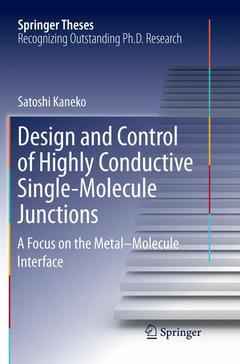Description
Design and Control of Highly Conductive Single-Molecule Junctions, Softcover reprint of the original 1st ed. 2017
A Focus on the Metal-Molecule Interface
Springer Theses Series
Author: Kaneko Satoshi
Language: English
Subjects for Design and Control of Highly Conductive Single-Molecule...:
Approximative price 105.49 €
In Print (Delivery period: 15 days).
Add to cartPublication date: 12-2018
Support: Print on demand
Approximative price 105.49 €
In Print (Delivery period: 15 days).
Add to cartPublication date: 04-2017
Support: Print on demand
Description
/li>Contents
/li>Comment
/li>
Nominated by Tokyo Institute of Technology as an outstanding Ph.D. thesis
Provides technical information for each step of the research of single-molecule junctions: fabrication, evaluation, and control of electrical conductance
Gives detailed insight regarding a highly conductive single-molecule electronic device
Includes supplementary material: sn.pub/extras




